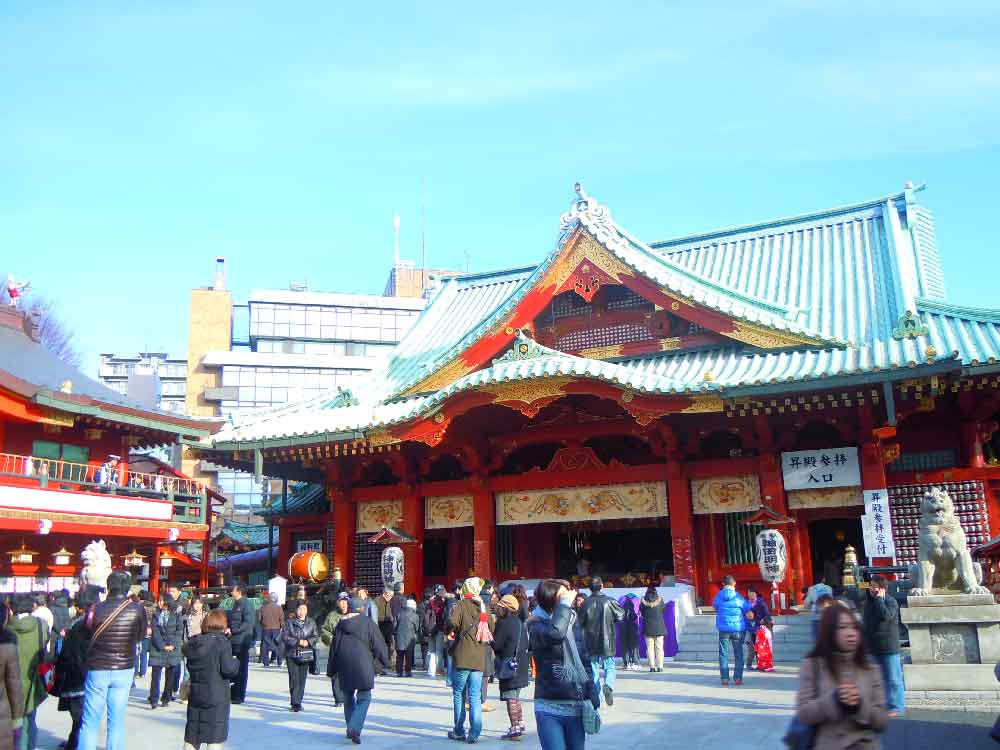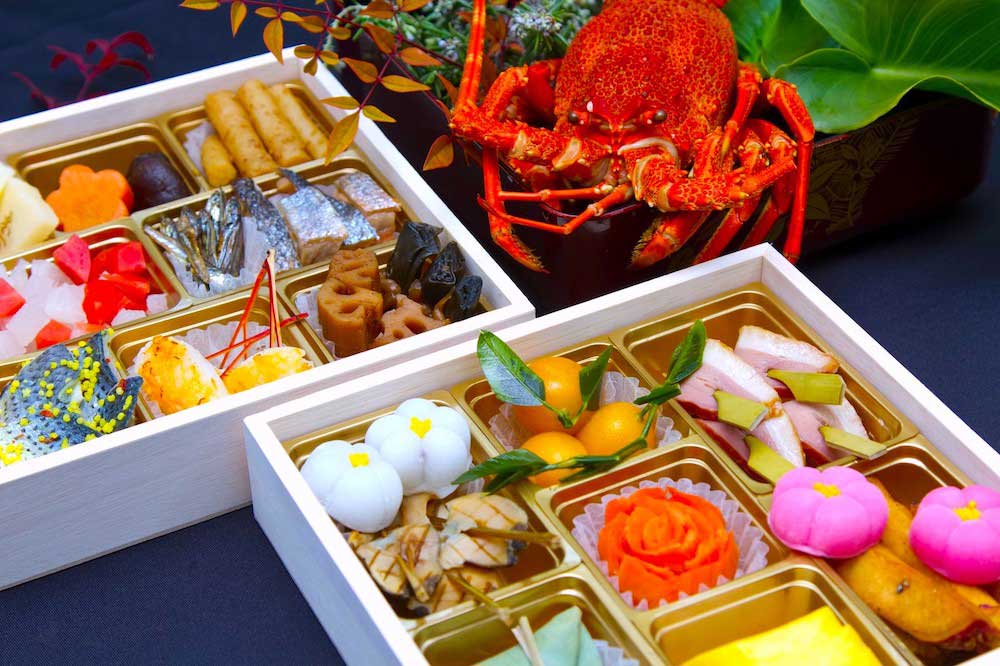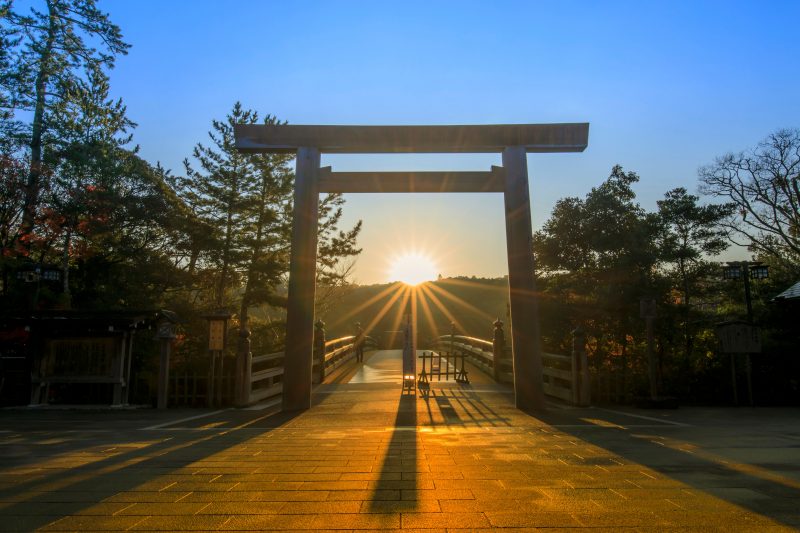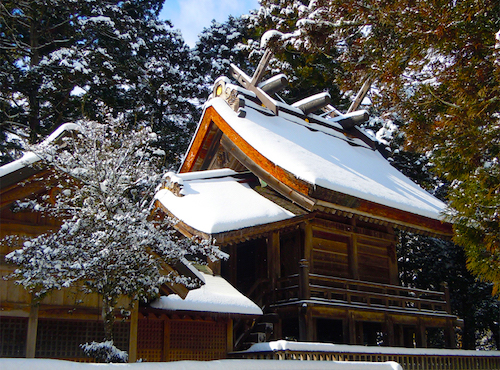
日本人にとって最も大切な行事のひとつ、お正月。
いよいよ年が明けると、初日の出を見て新年を祝い、寺社仏閣に初詣に行って幸福を祈願し、おせち料理やお餅を食べて過ごします。
日本の伝統文化が最も凝縮された特別な日といってもいいでしょう。
こちらの記事では、そんな「日本のお正月」を英語で説明する表現をまとめましたので、ご参考になれば幸いです。
ご興味のある方は、当サイトで 英語クイズ(5000問) を出題しておりますので是非ご覧ください。
目次
お正月の説明
“Oshōgatsu” literally indicates the first month of the year, and it represents the most important annual event of the year in which Japanese people celebrate the New Year.
(「お正月」は文字通り1年の最初の月を指し、日本人が新年を祝う最も重要な年中行事にあたります。)
Oshōgatsu is one of the most important events for the Japanese.
(お正月は、日本人にとって最も大切な行事のひとつです。)
In Japan, “shōgatsu,” the new year, means January, and it is generally celebrated for the first three days of January.
(日本では、お正月は1月を意味し、新年のお祝いをするのはふつう最初の3日間です。)
Schools and businesses close for one week starting around December 28th.
(学校や会社は12月28日頃から1週間お休みになります。)
On New Year’s Day, people eat the traditional meals of osechi-ryōri (Japanese New Year’s dishes) and ozōni (New Year’s soup with mochi rice cake).
(元旦には、新年の伝統的な食事「おせち料理」と「お雑煮」を食べます。)
January 1st is a day when many Japanese visit shrines.
(1月1日は、多くの日本人が神社を訪れる日です。)
People visit shrines and temples to pray for happiness and health.
(人々は神社やお寺に参詣し、幸福と健康をお祈りします。)
In the New Year, millions of visitors pour into shrines around the country to pray for happiness and prosperity in the year ahead.
(お正月には、全国の神社に何百万人もの参拝者が訪れ、一年の幸運と繁栄を祈願します。)
During oshōgatsu (the New Year’s season), it is said that a Shinto deity named “Toshigami” comes down from the sky and watches over his descendants.
(お正月には、神道の神様である「年神・歳神」が空から降りてきて、子孫を見守ってくれるといわれています。)
It is said that oshōgatsu was originally a festival to welcome “Toshigami,” a Shinto deity, and to pray for a rich harvest for the new year.
(お正月は、神道の神様である「年神・歳神」を迎えて新年の豊穣を願うお祭りが始まりといわれています。)
“Hatsuhinode” is the first sunrise of the year.
(「初日の出」とは、年の最初の日の出のことです。)
注連飾り
神道における神祭具のひとつで、神社の社などにおいて神域と現世を隔てる役割をもつ「注連縄」が、家庭の門口や玄関の外、お店の入り口などに飾られます。
最近では、華やかでややカジュアルなデザインで販売されることも多くなっています。

注連飾りの簡単な言い方としては、
- decoration of straw rope
- decoration of sacred rice-straw rope
などがあります。
a traditional Japanese New Year’s ornament to be hung on the front door
(玄関のドアにかけるお正月の飾り)
a traditional Japanese decoration of straw rope placed across the top of the entrance to a house during New Year’s holidays
(お正月の間に家の玄関の上に掛ける、日本の伝統的な藁縄の飾り)
traditional Japanese New Year decorations made of rice straw that are hung outside the house or company building
(お正月に家庭や会社の建物の外などに吊るす、日本の伝統的な藁製の飾り)
a type of shimenawa (braided rice straw rope), which works as a partition between the sacred space and the external world at Shinto shrines
(神社において、神域と外界を隔てる注連縄の一種)
People hang shimekazari over the entrance to their homes to show that the place is sacred.
(家庭の入り口に注連飾りを吊るして、神聖な場所であることを示します。)
“Shimekazari” is a traditional Japanese New Year decoration made of shimenawa, a sacred Shinto straw rope, and other materials such as bitter oranges, ferns, and crafted zigzag-shaped white paper strips called “shide.”
(「注連飾り」とは、日本の伝統的な新年の飾りで、神聖な藁縄の他に橙やシダ(羊歯)、「紙垂・四手」と呼ばれるジグザグな切り方をした白い紙でできています。)
It is hung above the entrance of the house to prevent evil spirits from entering while inviting the Toshigami (Shinto deity) to visit.
(悪霊の侵入を防いで「年神・歳神」様を迎え入れるために、玄関の上に掲げられます。)
It has the meaning of yorishiro, an object capable of attracting spirits, where “Toshigami” (the Shinto deity) who promises abundance and health makes a stop before entering the house.
(豊かさと健康を約束してくれる「年神・歳神」様が家に入る際に留まる依代としての意味を持っています。)
sacred とは、「神聖な」「宗教的な」「厳粛で破ることのできない」という意味です。
門松 / Kadomatsu
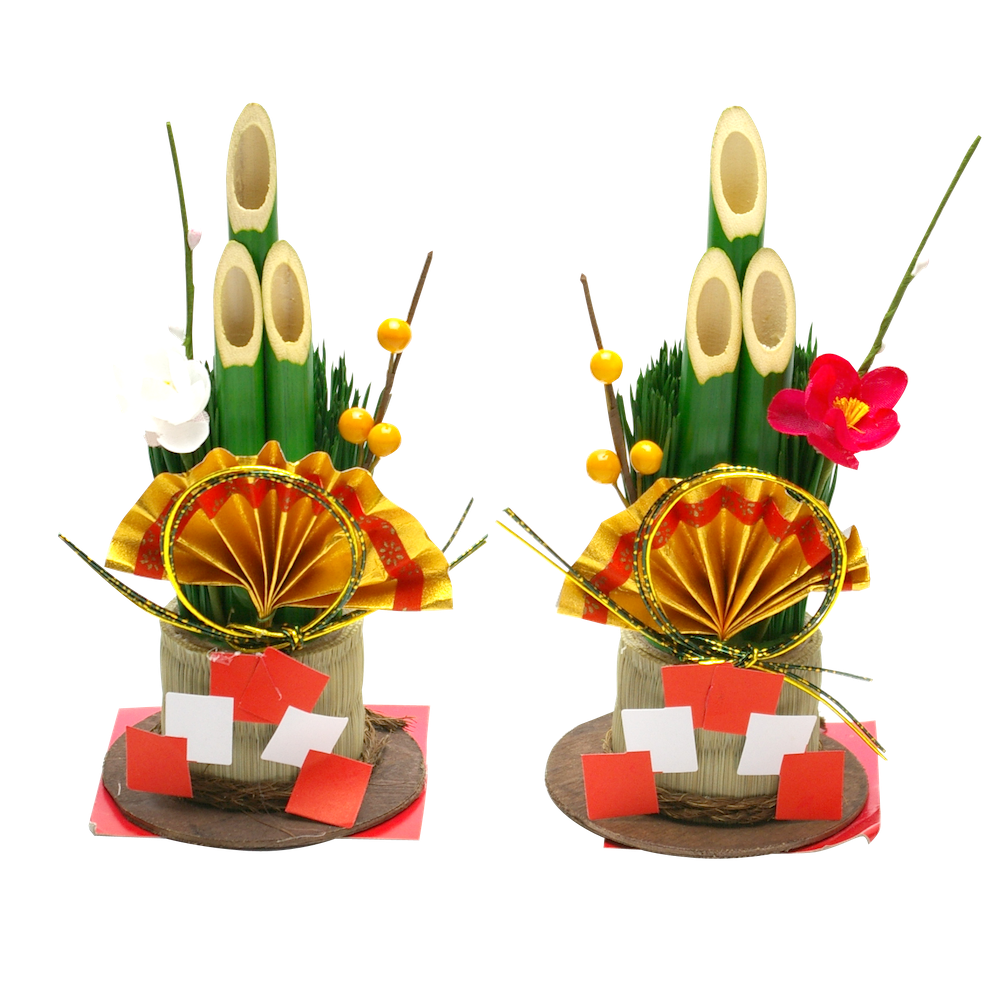
お正月に、家庭の入り口などに立てる松と竹で作った飾りで、「年神・歳神」の依代とされています。
“Kado” means a gate, and “Matsu” means a pine tree.
(Kado とは門、Matsu は松の木のことです。)
Kadomatsu is the New Year’s decorative pine branches and bamboo.
(門松とは、松の枝と竹でできたお正月用の飾りです。)
New Year’s pine and bamboo decorations which are placed in front of the gates
(門の前に立てられる、松の枝と竹の茎でできたお正月用の飾り)
Kadomatsu is a decoration of pine branches and bamboo that is placed in front of houses or shops during the New Year’s holidays. It is said that this is a traditional way to invite “Toshigami” (the Shinto god).
(門松とは、お正月に家庭やお店の入り口などに置かれる、松と竹でつくった飾りものです。神道の神様である「年神・歳神」を迎え入れる伝統的な様式といわれています。)
a pair of decorations of pine branches and bamboo stems placed at the gates of the house during the New Year’s season
(新年の期間中に家の門に置かれる松の枝と竹茎の飾り)
traditional Japanese decorations made with assembled pine branches, stems of bamboo, and sprays of Japanese apricot trees
(松の枝、竹の茎、梅の小枝で組み立てた日本の伝統的な飾り)
Many Japanese decorate the front doors of houses, company buildings and shops with a pair of “Kadomatsu” during the New Year’s season.
(多くの日本人が、お正月の間に家庭、会社の建物、お店の入り口を一対の「門松」で飾ります。)
During the New Year period, Kadomatsu ornaments are placed on both sides of the front entrance of houses.
(お正月の間は、門松が家庭の門口の両サイドに飾られます。)
Kadomatsu is a New Year’s decoration with pine and bamboo that is placed in front of the houses.
(門松とは、松と竹でできたお正月用の飾りで、家の前に置かれます。)
Pine symbolizes longevity and prosperity.
(松は長寿と繁栄を象徴しています。)
Kadomatsu, literally meaning “gate pine,” is placed in pairs in front of houses to welcome Toshigami (the Shinto deity).
(Kadomatsu とは、文字通り「門の松」で、「年神・歳神」を迎えるために家の前に2つの対で置かれます。)
In Japan, Kadomatsu ornaments made with pine and bamboo are set up in front of the house during shōgatsu (the New Year’s season). It is said that Toshigami (the Shinto god) comes down on it.
(日本ではお正月の間、松と竹でつくった門松の飾りを家の前に置きます。門松は「年神・歳神」の依代といわれています。)
「年神・歳神」様については、以下の記事でもご説明しています。
鏡餅 / Kagami-mochi
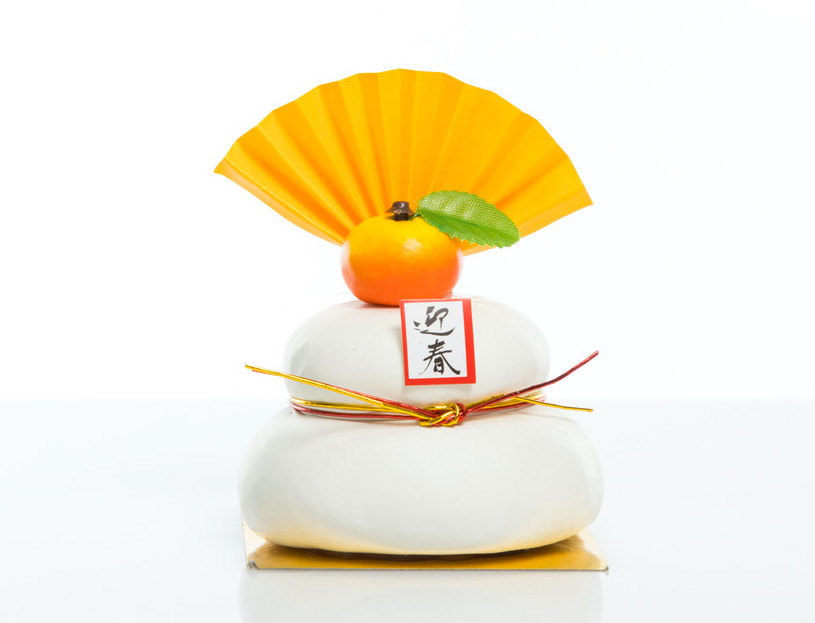
鏡餅とは、神道における伝統的な正月飾りで、お餅を神仏に捧げます。
これは穀物神である「年神・歳神」様へのお供え物で、「年神・歳神」様の依代でもあります。
名前の由来は、昔の鏡は丸かったので、三種の神器のひとつである八咫鏡(やたのかがみ)をかたどったものといわれています。
New Year’s offering, two rounds of rice cakes (mochi) with an orange on top
(新年のお供えもので、2つの丸いお餅の上に蜜柑をのせたもの)
Kagami-mochi is two flat, round rice cakes stacked on top of each other and topped with a bitter orange.
(鏡餅は、平たくて丸いお餅を2個重ねてその上に蜜柑のせたものです。)
offerings to the Sinto gods in the New Year piled up two round rice cakes with an orange on top
(新年に神様へお供えするもので、丸いお餅を2つ重ねて上に蜜柑をのせたもの)
traditional Japanese offering to Shinto deities made of two round rice cakes for New Year’s
(2つの丸いお餅から成る、お正月の神様への伝統的なお供えもの)
piled up round-shaped rice cakes offered to Shinto and Buddhist deities on New Year’s season
(丸い形をしたお餅を重ねて、お正月に神仏にお供えするもの)
The name “Kagami” (mirror) was derived from its shape, which resembled a mirror in the old days.
(「鏡」という名前は、昔の鏡に似た形に由来しています。)
Kagami-mochi is an offering to Shinto gods that has two small round rice cakes and a bitter orange, or mikan on the top.
(鏡餅とは、小さな丸いお餅を2つ重ねて、橙または蜜柑をのせ、神様にお供えするものです。)
Kagami-mochi are placed on a special tray called “sanpo.”
(鏡餅は、三方と呼ばれる特別なお盆にのせられます。)
獅子舞 / Shishimai
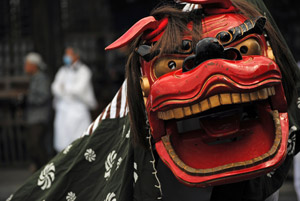
獅子舞とは、古来よりお正月行事によく見られる、獅子頭をかぶって踊る伝統的な演舞のことです。
幸運を招くとともに悪魔払いとして知られており、獅子に頭をかまれると、学力向上や無病息災などのご利益があるという言い伝えもあります。
発祥には諸説ありますが、中国をはじめ東アジアでは古来より見られる風習で、英語では一般的に lion dance と訳されます。
“Shishi” means lion and “Mai” means dance.
(「獅子」はライオン、「舞」は踊りを意味します。)
Shishimai is most commonly translated into English as “lion dance.”
(獅子舞は一般的に「ライオンダンス」と英訳されます。)
The roots of the Japanese lion dance are said to be China.
(日本の獅子舞のルーツは中国といわれています。)
a traditional Japanese performance for the New Year in which a person dances to music wearing a lion’s mask
(獅子の頭をかぶって音楽に合わせて踊る、日本のお正月の伝統的な演舞)
a traditional Japanese New Year’s dance that is performed in a lion costume to bring good luck and dispel evil spirits
(獅子の衣装を着て舞う日本のお正月の伝統的な踊りで、幸運を呼び邪気を払う)
a traditional cultural dance performed with a lion’s mask at shrines and other venues across Japan during New Year’s celebrations to ward off evil and bring good luck
(厄除けや開運を願って、お正月に全国の神社などで獅子頭をつけて演舞をする伝統文化)
Being bitten on the head by a shishimai is regarded as good luck and means good fortune for the new year.
(獅子舞に頭を噛まれることは縁起が良いとされ、新年の幸運を意味します。)
・venue:(コンサート・競技・会議などの) 開催地、会場
・dispel:(心配・恐怖などを) 払いのける、(うわさ・疑いなどを) 晴らす
・ward off:(病気・危険・悪霊などを) 避ける、払う
最後に
いかがでしたでしょうか。
日本の文化に興味がある外国人とのちょっとした会話の中で、「お正月」は最も適したテーマのひとつといえるでしょう。
「初詣」を英語で説明する 記事も書いていますので、ご参考になれば幸いです。
